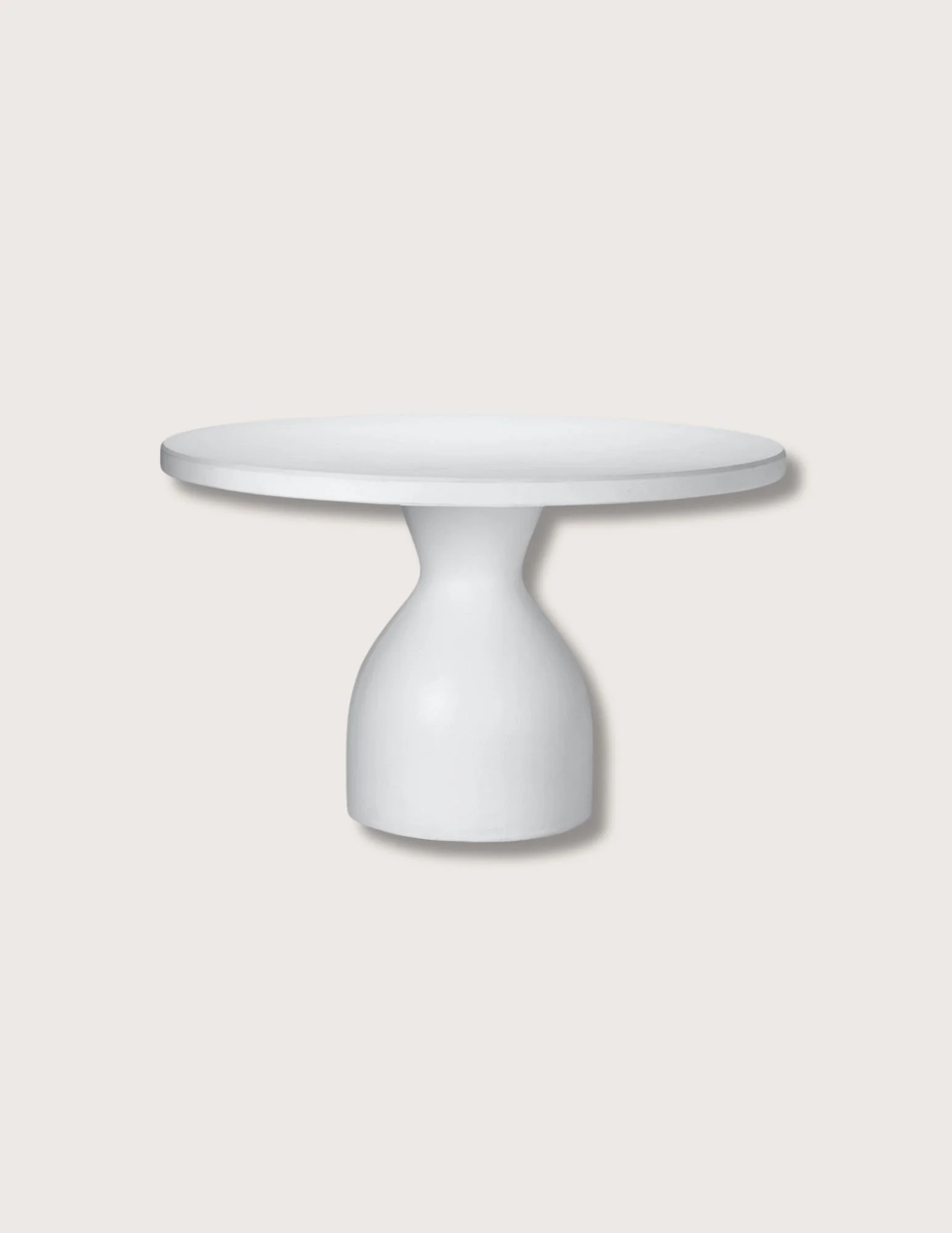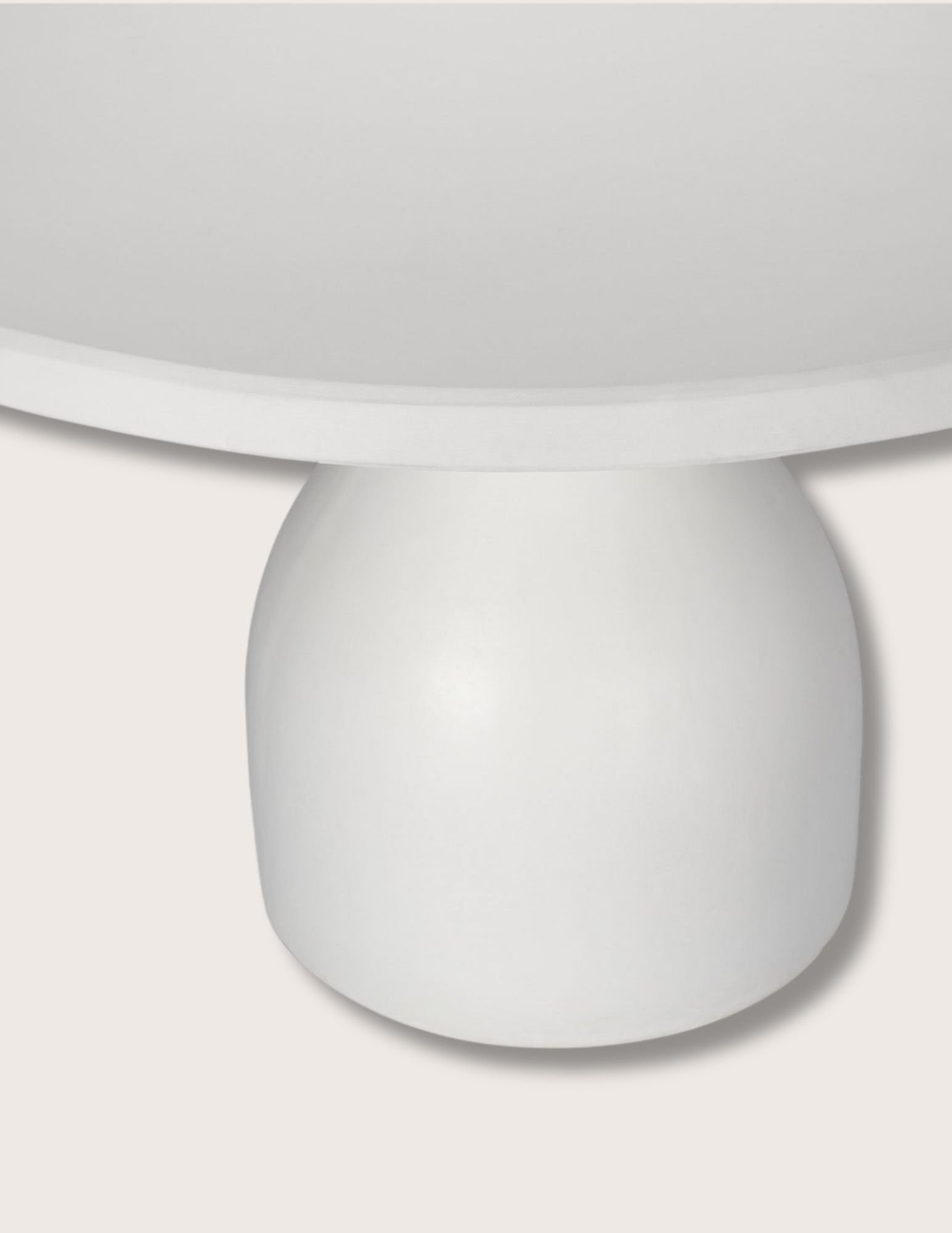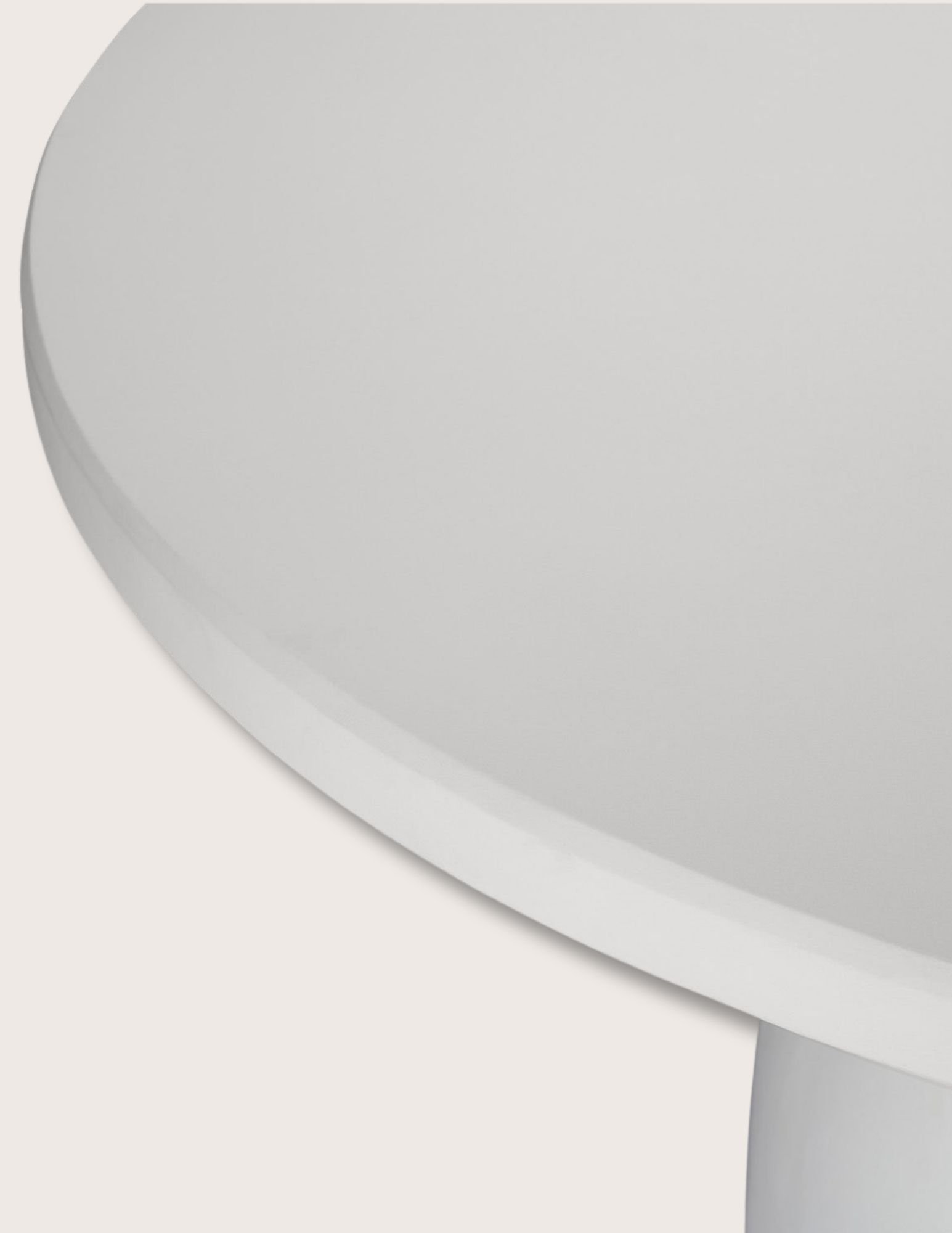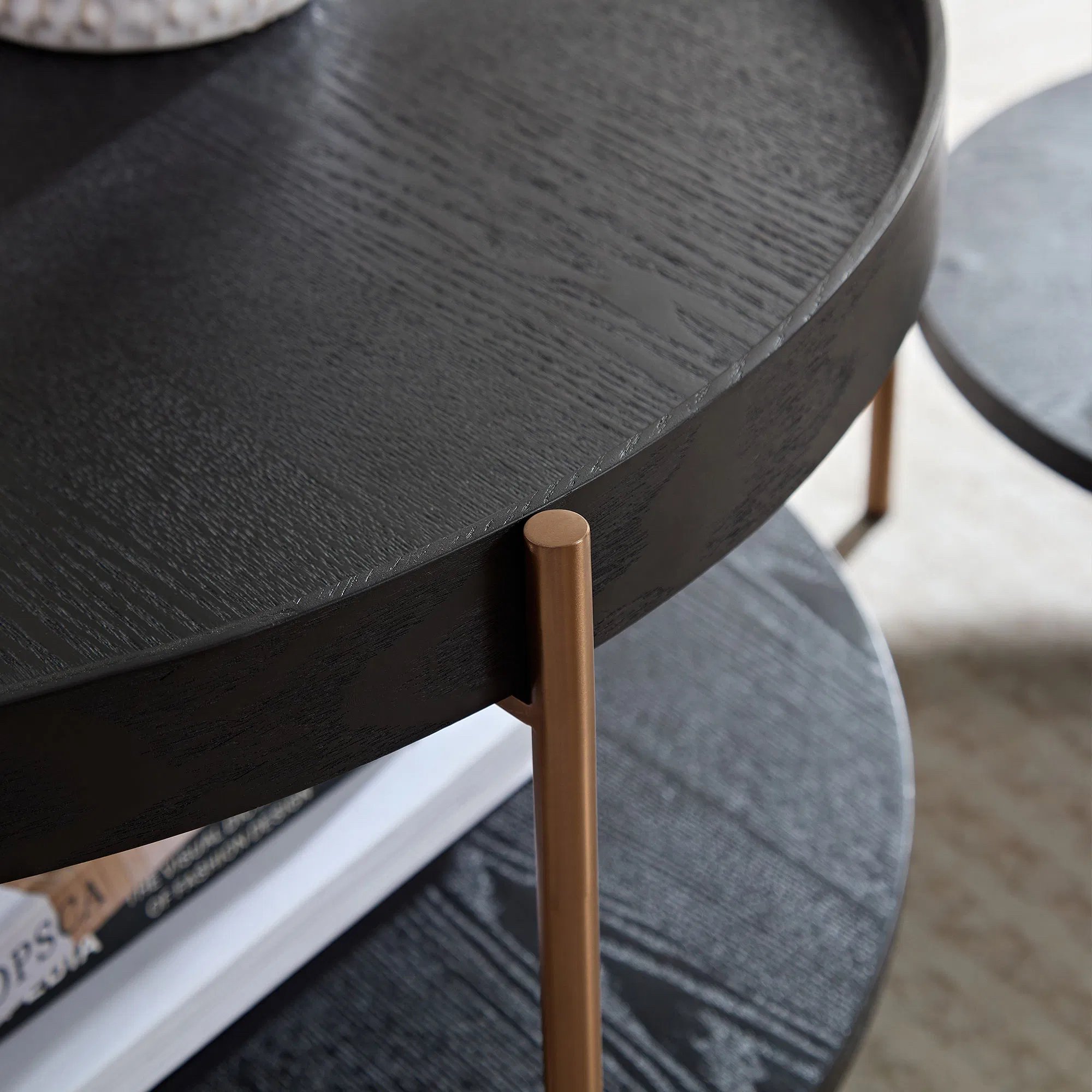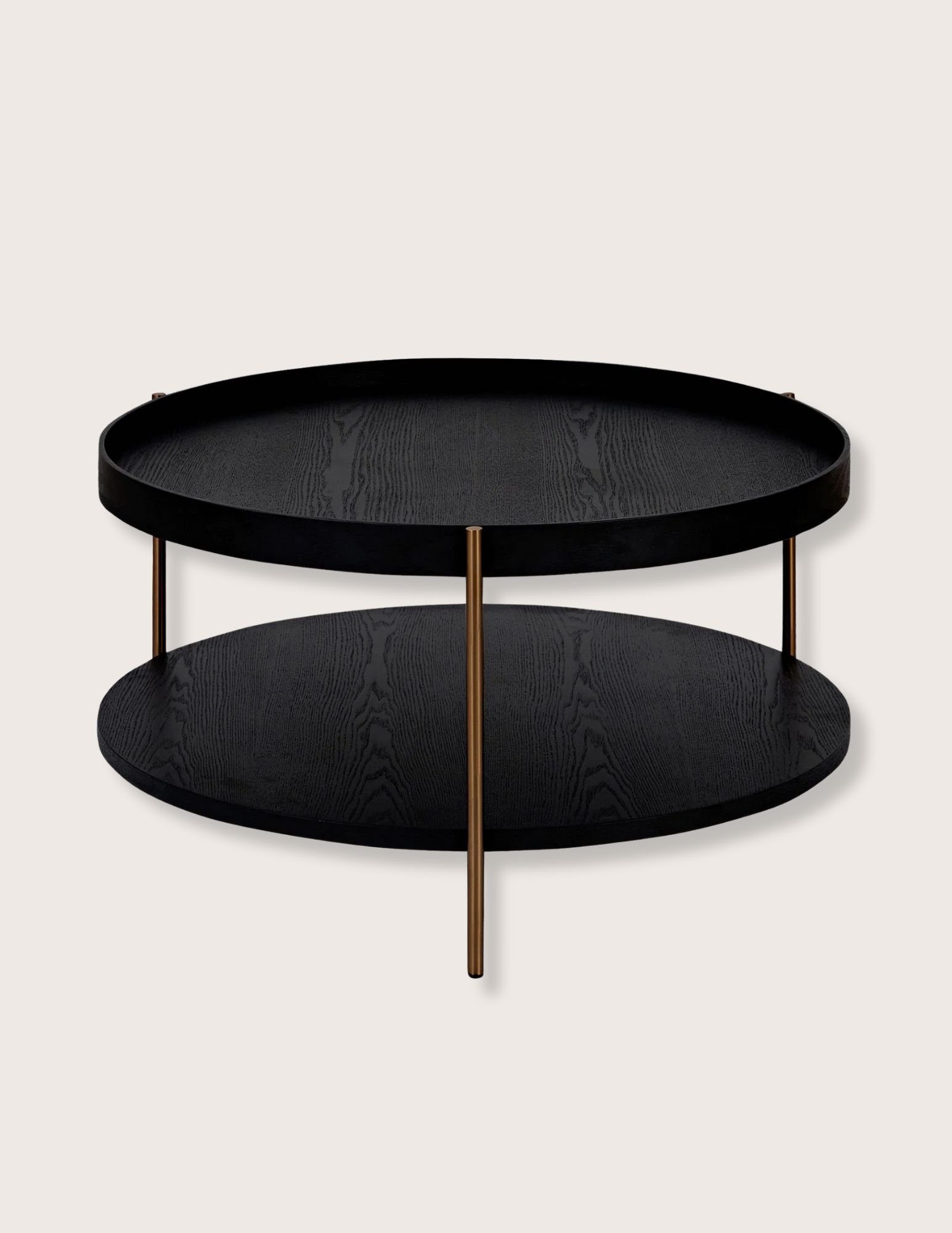Tadelakt Round Dining Table
Details
Our Tadelakt Round Dining Table is the perfect setting for your next dinner, party or event. The table boasts a timeless design with a classic tapered base and sleek top. Its clean lines and elegant silhouette make it the perfect centerpiece for any modern dining space. Its round design seats 6 and its reconstituted stone top and base are perfect for use indoor or out. Each piece is a one-of-a-kind work of art, with slight variations giving each table its own personality while maintaining the overall look and aesthetic. The piece is even designed to change over time, acquiring a unique patina that will add to its beauty over years of use and love. Redefine your dining experience with the Tadelakt Round Dining Table.
Editors' Note
This piece is named for Tadelakt (pronounced ta-dē-lact) — a lime-based plaster which has been used in the region of present-day Morocco for more than a thousand years, placing it among the oldest surviving plastering techniques in human history. The word, which is variously listed as being of Arab or Imazighen (Berber) origin, means, "to rub in," or "massage," and does not refer specifically to the material, but to the process by which it is applied. Limestone quarried from the region near Marrakech is turned into a plaster which, following application in many thin, successive layers, is polished with a stone and rubbed repeatedly with olive oil soap. The process creates an ombré-like series of color variations on surfaces that are, perhaps more importantly, made waterproof by the treatment. The tadelakt technique was developed by the Imazighen, who initially used it to waterproof cisterns. One story holds that the method was arrived at accidentally, as an attempt to straighten a wall by rubbing it with a stone instead smoothed the surface while lending it a glowing sheen. However it was developed, its selection for use in water storage was a wise choice. The plaster's pH level (12.4) renders it antibacterial as well as antimicrobial and anti-fungal, greatly ensuring a safe and clean water supply. In the 11th century AD, the Lamtuna Imazighen, part of the Sanhaja Confederacy, arrived in the area led by Abu Bakr Ibn Umar and Yusef ibn Tashfin, then leaders of the Al-Murabitun group that would later be remembered as Almoravids. Ibn-Tashfin in particular would go on to found the city of Marrakech, from which would grow the nation of Morocco. Under his leadership, the Almoravids would create a vast empire, which would include most of southern Spain (Andalusia) as well as much of Portugal. In Marrakech, under the Almoravids, the use of tadelakt expanded from pottery to architecture as the process was used to decorate and strengthen the exterior facades of palaces, riads and hammams (bathhouses). The process produced buildings in the traditional shades of Morocco: blue, brown, orange, green, pink, and vermillion — the reddish brown hue for which the walls of the old city are famed. Today, tadelakt enjoys a wide popularity for its colors, surface and eco-friendliness. The substance is entirely natural, as well as waterproof, antibacterial and free of VOCs. Even the manufacturing and application processes are traditionally low in emissions and light on environmental impact. Scratch-resistant and durable, it is frequently used on exteriors and interiors in kitchens, bathrooms, and other areas. Yet despite its wide adoption as a building material, tadelakt retains its roots as a pottery substrate, with modern pieces still being made with this age-old process.
Details
Our Tadelakt Round Dining Table is the perfect setting for your next dinner, party or event. The table boasts a timeless design with a classic tapered base and sleek top. Its clean lines and elegant silhouette make it the perfect centerpiece for any modern dining space. Its round design seats 6 and its reconstituted stone top and base are perfect for use indoor or out. Each piece is a one-of-a-kind work of art, with slight variations giving each table its own personality while maintaining the overall look and aesthetic. The piece is even designed to change over time, acquiring a unique patina that will add to its beauty over years of use and love. Redefine your dining experience with the Tadelakt Round Dining Table.
Editors' Note
This piece is named for Tadelakt (pronounced ta-dē-lact) — a lime-based plaster which has been used in the region of present-day Morocco for more than a thousand years, placing it among the oldest surviving plastering techniques in human history. The word, which is variously listed as being of Arab or Imazighen (Berber) origin, means, "to rub in," or "massage," and does not refer specifically to the material, but to the process by which it is applied. Limestone quarried from the region near Marrakech is turned into a plaster which, following application in many thin, successive layers, is polished with a stone and rubbed repeatedly with olive oil soap. The process creates an ombré-like series of color variations on surfaces that are, perhaps more importantly, made waterproof by the treatment. The tadelakt technique was developed by the Imazighen, who initially used it to waterproof cisterns. One story holds that the method was arrived at accidentally, as an attempt to straighten a wall by rubbing it with a stone instead smoothed the surface while lending it a glowing sheen. However it was developed, its selection for use in water storage was a wise choice. The plaster's pH level (12.4) renders it antibacterial as well as antimicrobial and anti-fungal, greatly ensuring a safe and clean water supply. In the 11th century AD, the Lamtuna Imazighen, part of the Sanhaja Confederacy, arrived in the area led by Abu Bakr Ibn Umar and Yusef ibn Tashfin, then leaders of the Al-Murabitun group that would later be remembered as Almoravids. Ibn-Tashfin in particular would go on to found the city of Marrakech, from which would grow the nation of Morocco. Under his leadership, the Almoravids would create a vast empire, which would include most of southern Spain (Andalusia) as well as much of Portugal. In Marrakech, under the Almoravids, the use of tadelakt expanded from pottery to architecture as the process was used to decorate and strengthen the exterior facades of palaces, riads and hammams (bathhouses). The process produced buildings in the traditional shades of Morocco: blue, brown, orange, green, pink, and vermillion — the reddish brown hue for which the walls of the old city are famed. Today, tadelakt enjoys a wide popularity for its colors, surface and eco-friendliness. The substance is entirely natural, as well as waterproof, antibacterial and free of VOCs. Even the manufacturing and application processes are traditionally low in emissions and light on environmental impact. Scratch-resistant and durable, it is frequently used on exteriors and interiors in kitchens, bathrooms, and other areas. Yet despite its wide adoption as a building material, tadelakt retains its roots as a pottery substrate, with modern pieces still being made with this age-old process.
Details
Our Tadelakt Round Dining Table is the perfect setting for your next dinner, party or event. The table boasts a timeless design with a classic tapered base and sleek top. Its clean lines and elegant silhouette make it the perfect centerpiece for any modern dining space. Its round design seats 6 and its reconstituted stone top and base are perfect for use indoor or out. Each piece is a one-of-a-kind work of art, with slight variations giving each table its own personality while maintaining the overall look and aesthetic. The piece is even designed to change over time, acquiring a unique patina that will add to its beauty over years of use and love. Redefine your dining experience with the Tadelakt Round Dining Table.
Editors' Note
This piece is named for Tadelakt (pronounced ta-dē-lact) — a lime-based plaster which has been used in the region of present-day Morocco for more than a thousand years, placing it among the oldest surviving plastering techniques in human history. The word, which is variously listed as being of Arab or Imazighen (Berber) origin, means, "to rub in," or "massage," and does not refer specifically to the material, but to the process by which it is applied. Limestone quarried from the region near Marrakech is turned into a plaster which, following application in many thin, successive layers, is polished with a stone and rubbed repeatedly with olive oil soap. The process creates an ombré-like series of color variations on surfaces that are, perhaps more importantly, made waterproof by the treatment. The tadelakt technique was developed by the Imazighen, who initially used it to waterproof cisterns. One story holds that the method was arrived at accidentally, as an attempt to straighten a wall by rubbing it with a stone instead smoothed the surface while lending it a glowing sheen. However it was developed, its selection for use in water storage was a wise choice. The plaster's pH level (12.4) renders it antibacterial as well as antimicrobial and anti-fungal, greatly ensuring a safe and clean water supply. In the 11th century AD, the Lamtuna Imazighen, part of the Sanhaja Confederacy, arrived in the area led by Abu Bakr Ibn Umar and Yusef ibn Tashfin, then leaders of the Al-Murabitun group that would later be remembered as Almoravids. Ibn-Tashfin in particular would go on to found the city of Marrakech, from which would grow the nation of Morocco. Under his leadership, the Almoravids would create a vast empire, which would include most of southern Spain (Andalusia) as well as much of Portugal. In Marrakech, under the Almoravids, the use of tadelakt expanded from pottery to architecture as the process was used to decorate and strengthen the exterior facades of palaces, riads and hammams (bathhouses). The process produced buildings in the traditional shades of Morocco: blue, brown, orange, green, pink, and vermillion — the reddish brown hue for which the walls of the old city are famed. Today, tadelakt enjoys a wide popularity for its colors, surface and eco-friendliness. The substance is entirely natural, as well as waterproof, antibacterial and free of VOCs. Even the manufacturing and application processes are traditionally low in emissions and light on environmental impact. Scratch-resistant and durable, it is frequently used on exteriors and interiors in kitchens, bathrooms, and other areas. Yet despite its wide adoption as a building material, tadelakt retains its roots as a pottery substrate, with modern pieces still being made with this age-old process.
Additional Details
Indoor/Outdoor Round stone dining table
Material: Reconstituted Stone
Seats: 6
Size: 48"D x 30"H
Base Dimensions: 31.5"D x 29"H
Leg Clearance: 28"
Assembly required, tools included
Not Suitable for freezing temperatures
Items crafted with this material can vary slightly from piece to piece and may change over time.
Imported
Made to order
Ships to the continental US in 3-4 weeks
Care Instructions: Reconstituted stone is intended to develop a patina and improve with time. Cracks and variation in color are normal. Waxing is not necessary and may create undesired marks on surface areas. Use neutral pH cleaners specifically designed for natural stone that do not contain acid or bleach. Cover and keep raised off the ground during extreme weather. Do not leave in standing water.

